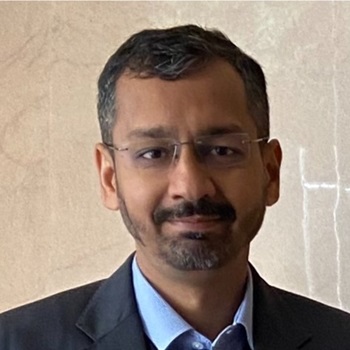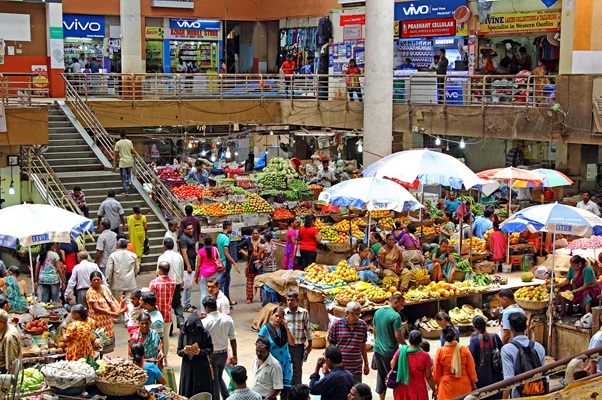.png)

Dr. Srinath Sridharan is a Corporate Advisor & Independent Director on Corporate Boards. He is the author of ‘Family and Dhanda’.
May 28, 2025 at 9:40 AM IST
India’s rise to become the world’s fourth-largest economy reflects a decade of macroeconomic stability, expanding global linkages, and sustained infrastructure investment. But if this milestone is to carry real meaning, we must shift focus—from economic scale to economic depth, from momentum to outcomes.
That shift begins by recognising a sobering truth: India ranks 122nd globally in per capita GDP, behind Vietnam, Sri Lanka, and the Philippines. We are only marginally ahead of Bangladesh. At $8 trillion, our per capita income will still be just around $5,000—well below middle-income levels. Size alone does not deliver prosperity. To rise as a truly developed economy, India must ensure that growth translates into opportunity and security for every citizen.
The challenge is clear: to transform economic activity across manufacturing, agriculture, and services into higher-value output. This will require deeper reforms, political courage, and a long-term strategy rooted in building capabilities—not just expanding capacity. That means shifting from a transactional state to an enabling one, from short-term populism to patient investments in productivity.
Nowhere is this more urgent than in our cities—where the economy increasingly resides, but where liveability is rapidly declining. Despite ambitious budgets, flagship missions, and smart-city slogans, India’s urban centres are becoming less habitable, not more. Basic civic outcomes—housing, water, sanitation, waste management, mobility—remain far below expectations. There is a visible gap between narrative and reality, and a creeping sense of civic apathy.
This urban crisis is core to our economic aspirations. Cities are meant to be engines of growth and hubs of aspiration. But when they become congested, polluted, and dysfunctional, they repel rather than attract talent and investment. Worse, we are heading into this future with little preparation for the demographic shift that lies ahead. In a few decades, India will have a much older population. Yet our infrastructure, healthcare, and social systems are not remotely geared to serve an ageing society. Without intervention today, we risk inheriting cities that are not only unliveable, but also unworkable for the elderly and vulnerable.
This is compounded by another major blind spot in our economic imagination: the chronic underinvestment in research and development. For a nation aspiring to be a global manufacturing powerhouse, our R&D spending remains below 1% of GDP and has stagnated for years. The future of manufacturing is not labour-intensive replication—it is innovation-intensive creation. We cannot become a serious player in global value chains without investing in the science, design, and technology that underpin modern industry. If we continue to underinvest in R&D, India may remain a site for assembly, but not for invention.
The foundation of any serious economic transformation, however, is human capital. Our young population gives us an edge, but only if it is healthy, skilled, and empowered. Health, education, and skilling are not peripheral concerns—they are the engine room of productivity. Too many young Indians remain underprepared for the demands of a rapidly evolving economy, while too much of our workforce remains informal, insecure, and excluded from formal safety nets.
Meeting this challenge requires governance that is closer to people—and that means strengthening cooperative federalism. The most critical levers of human development—public health, schooling, skills training, and municipal capacity—are held by states. A reimagined model of collaborative federalism—one rooted in trust, clarity, and shared outcomes—is now essential. India’s development story will be shaped not just in Delhi, but in the administrative corridors of every state capital and the municipal streets of every growing town.
Equally urgent is the question of inclusion. No country can afford to leave half its population out of its growth engine. India’s persistently low female labour force participation is not only a gender issue—it is a hard economic constraint. Empowering women through better access to education, safety, care infrastructure, and dignified work is not a matter of optics. It is fundamental to national productivity and household resilience.
Institutional capacity will be the quiet engine of our future economy. Growth built on improvisation cannot be sustained. The state must evolve from a provider of schemes to a builder of systems. Rule-based governance, efficient regulation, judicial reform, and policy stability are not secondary—they are foundational to attracting long-horizon capital and scaling innovation.
Finally, our measurement of progress must also evolve. GDP is an important indicator, but not a complete one. A multidimensional lens—tracking learning outcomes, health access, environmental quality, gender equity, and institutional trust—is essential. They define whether growth is meaningful, inclusive, and sustainable. India’s rise to the $4 trillion milestone is a good achievement. But the journey ahead cannot be a matter of extrapolation. It will be shaped by the quality of our institutions, the wisdom of our investments, and the clarity of our social contract.
To make that shift, India must institutionalise a new development dashboard—one that regularly tracks and transparently reports human development outcomes with the same rigour and visibility as economic indicators. While many of these metrics—school dropout rates, learning outcomes, primary healthcare access, gender gaps, and environmental health—already exist across the policy landscape, they remain scattered, underutilised, or repurposed for political messaging. Without a formal mechanism for measurement, accountability, and course correction, they risk becoming instruments of sloganeering rather than levers of transformation. Elevating these indicators to the level of economic KPIs—monitored by Parliament, debated by media, and owned by both Centre and states—is essential. Only then can India align its development ambitions with the lived experience of its people, and embed human progress as the true north of economic strategy.




